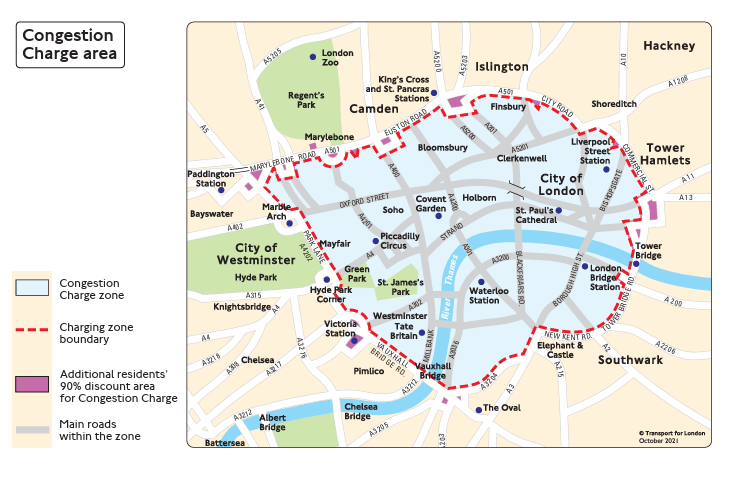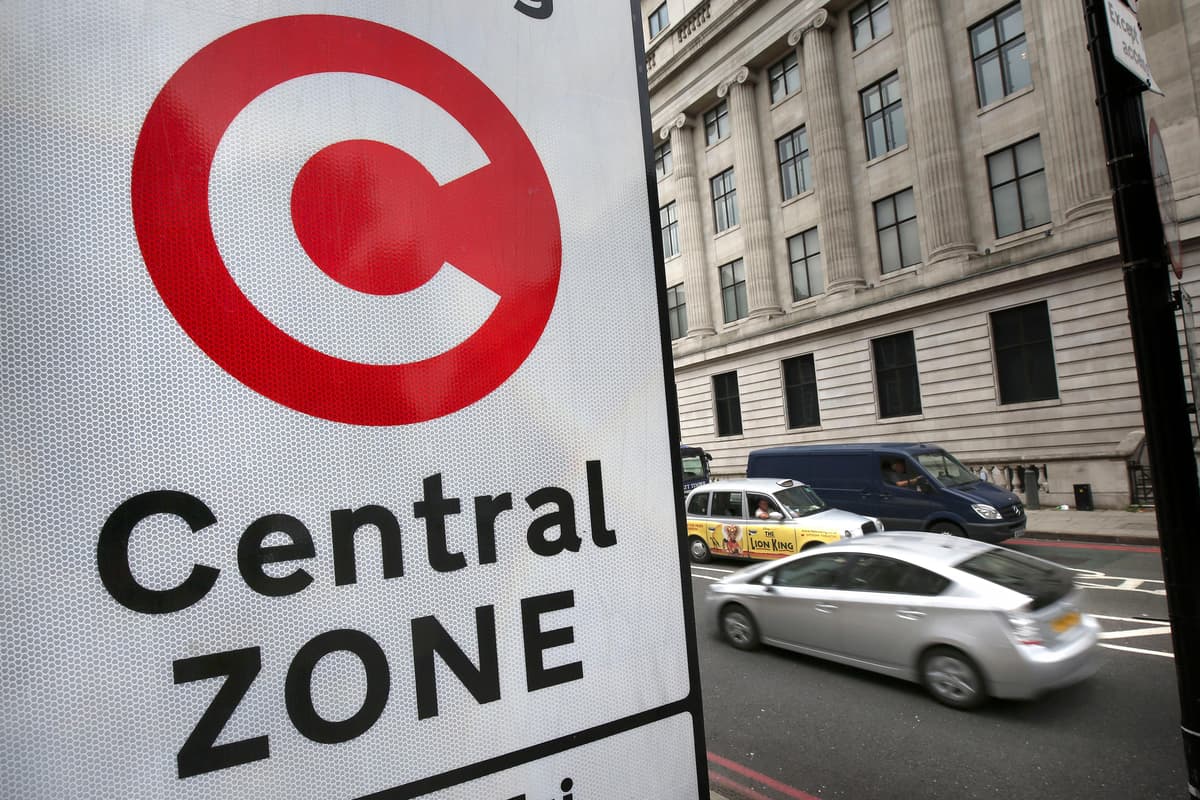
Effective from January 2026, the charge will rise from £15 to £18 in its first increase since 2020.
Under the changes, the TfL is also proposing a new cleaner vehicle discount. From January 2, 2026, electric vehicle motorists will have a 25 per cent discount, while electric van drivers will benefit from a 50 per cent discount.
But what is the congestion charge and where is it enforced?
What is the Congestion Charge?
The charge was first introduced in 2003 under Ken Livingstone’s term as Mayor of London.
The objective of the charge is to reduce traffic, lower air and noise pollution, and raise funds for London’s transport system.
The charge only applied if you drive within the charge zone between 7:00 and 18:00 on weekdays and 12:00 to 18:00 on weekends and bank holidays. There is currently no charge on Christmas Day or New Year’s Day.
To pay the charge, it is advisable to set up autopay via the TfL website.
Where is the Congestion Charge zone?
The Congestion Charge zone applies to Central London. Key locations within the perimeter include Piccadilly Circus, Covent Garden, London Bridge, Waterloo, and Liverpool Street.

A map of TfL’s Congestion Charge zone
TfL
The Ultra Low Emission Zone (ULEZ) is different from the Congestion Charge zone. It operates across all London boroughs every single day, bar Christmas Day.
Vehicles within the ULEZ must meet certain emissions requirements. If they do not, they will face a £12.50 daily charge to drive within the zone. This applies to cars, motocycles, vans, and minibuses.
Lorries or vans and specialist heavy vehicles above 3.5 tonnes do not need to pay the ULEZ charge. Instead, they will pay the LEZ charge if they do not meet emissions standards.
You can check what charges you may need to pay in London via the TfL website.
